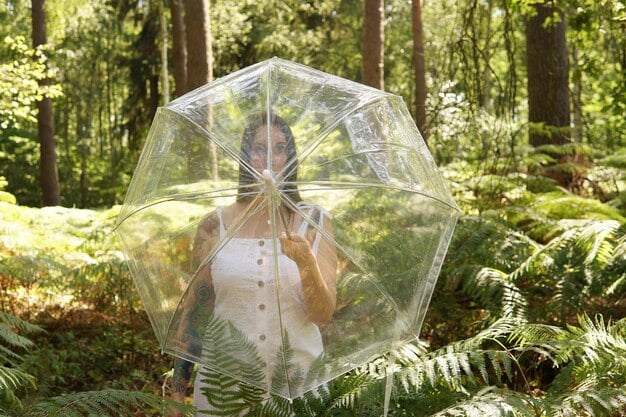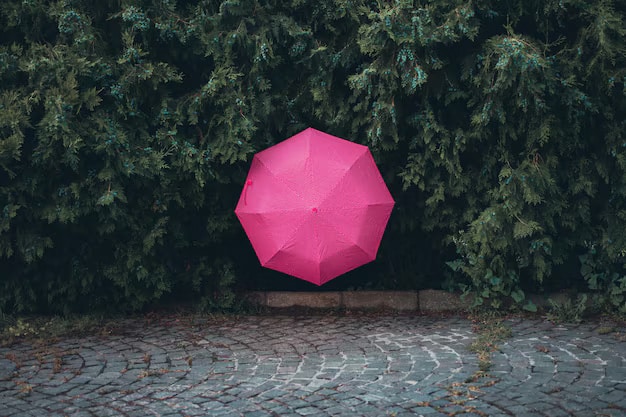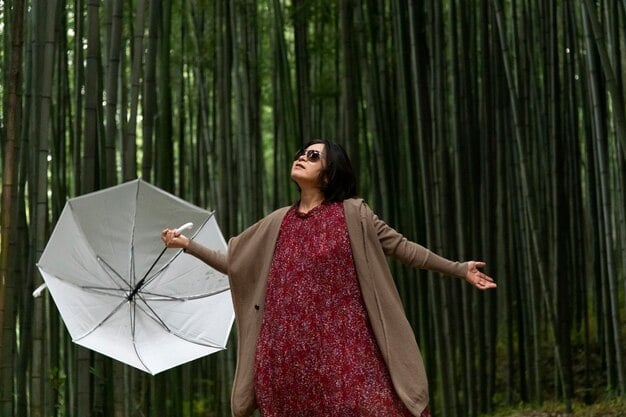For European businesses — especially those operating in Germany, the Nordics, and other environmentally conscious markets — sustainability is no longer a “nice to have.” It’s an expectation. A requirement. A value that defines whether customers trust your brand or turn to someone else.
And that expectation now extends to everything — including your promotional merchandise.
Custom umbrellas might seem like a small detail, but they’re a high-visibility product. They travel. They’re reused. They show up in photos, on streets, at events. And when they’re made with sustainability in mind, they carry more than just your logo — they carry a message.
So if you’re planning branded umbrellas for an event, campaign, or client gift — and sustainability matters to your audience — here’s how to get it right.

Table of Contents
First Things First: What Makes an Umbrella Eco-Friendly?
Not all “green” claims are created equal. It’s easy to slap an eco-label on a product, but in Europe, customers (and regulators) are asking better questions:
- What is it made from?
- Is the production process ethical and traceable?
- Will the product last, or is it still disposable under a different name?
A genuinely eco-friendly umbrella balances three things:
- Sustainable materials
- Responsible manufacturing
- Durability and functionality
Let’s take each of those in turn.
1. Better Materials: RPET, Bamboo, and Beyond
A typical RPET canopy might recycle anywhere from 5 to 9 plastic bottles per umbrella — not just diverting waste, but giving it a useful second life.
Other innovations we’re seeing more of include:
- Wooden shafts and tips (from certified sources)
- Non-toxic dyes for printing
- Biodegradable packaging sleeves or recycled cardboard boxes
At HF Umbrella, we offer a range of models that tick these boxes — and we’re constantly working with suppliers to push materials further.
2. Manufacturing You Can Stand Behind
Eco-materials are only one side of the story. How those materials are sourced, handled, and assembled matters just as much — especially for buyers in the EU.
Here’s where certification comes in.
REACH Compliance
If you’re ordering promotional products into the EU, REACH (Registration, Evaluation, Authorisation and Restriction of Chemicals) compliance is non-negotiable. It ensures that your umbrellas don’t contain any harmful chemicals — particularly those that can be absorbed through skin contact or leach into the environment.
OEKO-TEX® Standard 100
OEKO-TEX certified materials guarantees that every thread, button, and print used in the product has been tested for harmful substances — and found safe for human health.
It’s especially relevant if the umbrella will be used in industries like retail, hospitality, or education, where product safety matters just as much as branding.
BSCI & SEDEX
Buyers concerned with ethical production should also ask about BSCI (Business Social Compliance Initiative) and SEDEX membership. These frameworks focus on working conditions, worker rights, environmental protection, and supply chain transparency.
In Germany in particular, these standards are fast becoming a basic requirement for procurement — not just a bonus.

3. Designed to Last (Because True Sustainability Isn’t Disposable)
One of the least-talked-about elements of sustainability is durability. No matter how green the materials are, if the umbrella breaks after a couple of uses, it ends up in the bin — and all that effort goes to waste.
A properly made eco umbrella should be just as strong and weather-resistant as a standard model. That means:
- Reinforced frame (often fibreglass or windproof tech)
- Quality stitching
- Canopy coating for water and UV protection
- Comfortable grip (even with natural materials like bamboo)
We’ve spent years refining our eco models so they hold up in real conditions — not just look the part in a product photo.
Bonus: Go Beyond the Product
Eco-friendly umbrellas aren’t just about doing the right thing — they’re also a brilliant part of your brand story.
If you’re sponsoring a sustainable event, launching a green campaign, or trying to align more closely with your ESG values, umbrellas make a great talking point.
Use a recycled-fabric umbrella at a trade show and people will ask about it. Include a “Made from 8 recycled bottles” tag and people will remember it. Add a QR code to the sleeve and you can link straight to your impact statement, ESG policy, or video content.
This stuff works — not just because it feels good, but because it sets you apart from competitors handing out the same tired promo gear.
Common Questions We Get About Eco Umbrellas
Can I customise an eco-friendly umbrella just as much as a standard one?
Yes. We can print on multiple panels, use digital or screen printing (with water-based inks), and even help design custom handles, sleeves, and packaging.
Do green umbrellas cost more?
Slightly — but not as much as you’d think. The price difference is usually marginal, and the long-term brand value far outweighs the cost.
Can I get certification documents to show my client/procurement team?
Absolutely. We’ll provide all relevant REACH, OEKO-TEX, and BSCI documentation as part of the quote.
How fast can I get them?
Standard turnaround for eco umbrellas is 3–5 weeks, depending on the order size and customisation level. But we do offer rush production for certain models — just ask.
Final Thoughts
Sustainability isn’t just a trend in Europe — it’s a requirement. And your customers, clients, and stakeholders are paying attention to the details.
With the right umbrella supplier, sourcing eco-friendly merchandise doesn’t have to be complicated. It just takes a bit of know-how, clear documentation, and a design team who can balance sustainability with style.
That’s where we come in.
Submit your design today for a free eco umbrella preview. We’ll show you how your branding can work across our most sustainable models — and help you tick every compliance box while delivering something that actually gets used.

